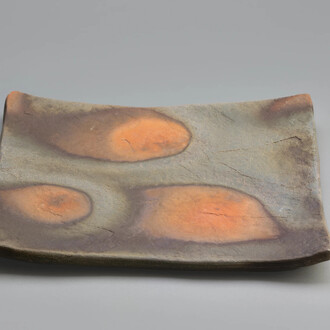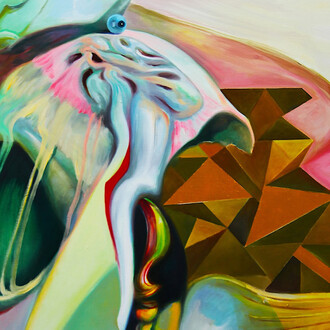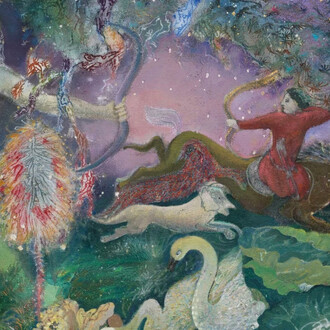Onishi Gallery is proud to present The Four Elements in Japanese Arts: Earth, Air, Fire and Water - a stunning exhibition that showcases the technical mastery of contemporary Japanese ceramic artists.
For generations, Japanese people have appreciated and incorporated natural elements into their everyday lives. They have adorned the interiors of their homes with natural forms, designed spaces that capture the natural world in the frame of a garden, decorated art objects with subjects found in the wild, and penned haiku poetry about details of the natural environment. In this landmark exhibition, featured artists draw upon the four central elements of earth, air, fire, and water in porcelain creations to communicate core themes and creative visions that ground Japanese art and life.
Featured artists in the exhibition include Living National Treasures: Tokuda Yasokichi III (1933-2009), Yoshita Minori (b. 1932), Imaizumi Imaemon XIV (b. 1962), Maeta Akihiro (b. 1974) and Inoue Manji (b. 1929). These artists encapsulate the elegant subtlety amongst the delicate art of porcelain. Tokuda Yasokichi III and Yoshita Minori carry delicate creations throughout the space with traditional glaze and gold leaf textures. Imaizumi Imaemon XIV elevates contemporary Nabeshima porcelain painted with his Rinpa-style designs, while Maeta Akihiro, focuses on elegance with his technique of forming designs by hand, free-form sculpting with just fingers and palms to create stillness into simplistic creations. Lastly, Inoue Manji, recognized for hakuji porcelain-ware, creates smooth, soft, silky surfaces of delicately hardened forms characterizing the unmatched beauty of Manji's work.
The artists who are joined in the grace of the porcelain craft include: Shomura Ken (b. 1949), Tokuda Yasokichi IV (b. 1961) Ohi Toshio Chozaemon XI (b. 1958) Ohi Toyasai Chozaemon X (b. 1927) Yoshita Yukio (b. 1960) Konno Tomoko (b. 1967) Suzuki Miki (b. 1970) Akiko Noda (b. 1975) Eno Masatake (b. 1965) and Itabashi Hiromi (b. 1948).
Tokuda Yasokichi III was one of the world’s most famous Kutani potters. Born in Ishikawa prefecture, he was designated a Living National Treasure in 1997 for his mastery of the saiyu glaze technique. Yasokichi III innovated the glaze technique based on traditional Kutani colored glaze enamels. He developed techniques handed down from his grandfather, Tokuda Yasokichi I (1873–1956) and later, his father, Tokuda Yasokichi II (1907–1997). Through his saiyu glaze (vivid enamel glaze) technique, Yasokichi III created his own designs characterized by delicate shading and beautiful color contrasts. His honors include the acceptance into the Issui-kai Pottery and Porcelain Exhibition (1958), and multiple prizes such as the Japan Traditional Art Crafts Association Chairman’s Award (1977), the Grand Prize of the International Pottery and Porcelain Exhibition (1990), and the Medal with Purple Ribbon given by the Emperor of Japan (1993).
Yoshita Minori took over the family business in 1951 and became the 3rd generation head of the family. Since then, he has been experimenting with various traditional techniques characteristic to the Nishikiyama Kiln while refining them in innovative ways. The artist is recognized for his graceful application of yūri-kinsai, an underglazed gold decorative porcelain developed during the 1960s in Kanazawa, in which gold-leaf cutouts are applied prior to glazing rather than painted by brush. His method opened a new frontier in the world of gold-colored porcelains in Japan and he is regarded as the premier artist of this technique.
Imaizumi Imaemon XIV became the head of their celebrated family of Iro-Nabeshima ceramicists after the passing of Imaizumi Imaemon XIII (1926-2001, Living National Treasure), . In 2014, at the age of 51, Imaizumi Imaemon XIV became the youngest artist in Japan to be designated a Living National Treasure for his achievements in elevating contemporary Nabeshima porcelain. Incorporating his signature Rinpa-style designs, which embraces bold, graphic renderings of allegorical iconography, and traditional techniques developed by his family over generations, Imaemon XIV’s work is an innovative example of Nabeshima ware.
Maeta Akhiro is a highly influential artist and considered the leading white porcelain ceramicist of his generation. Maeta does not actually form his pieces on a potter’s wheel, but rather, uses the wheel only for the initial throw of his works. He forms the faceted designs in much of his pottery by hand, through free-form sculpting and molding with just fingers and palms. Then, in what is a contemplative process for Maeta, prior to the glazing process, he uses a single blade to trim and erase any traces or marks of his hand. Finally, the works are fired in a relatively low temperature gas kiln. The resulting white porcelain sculptures are elegant tributes to simple beauty without excess. His works are unlike any other contemporary Japanese porcelain: pure, serene, and seemingly perfect. In 2007, he received the Medal with Purple Ribbon from the Emperor of Japan.
Inoue Manji was born in 1929, learning to specialize in Arita ware—a traditionally colorful pottery form. Soon, however, he began working in white porcelain and became celebrated worldwide for the graceful medium. Hakuji is created by pouring a transparent glaze over white clay (Kaolin) and firing at a high temperature. Inoue demands perfection in shape and is known to be unforgiving, rejecting even a millimeter of distortion. He states that, “hakuji expresses itself through form rather than added decoration,” and his pieces exemplify this truth through refined curves and purely rounded forms rather than distracting surface decor. Simple lines belie their power as viewers’ eyes are lost in the infinite depth of pure white peaks and valleys. The smooth, soft, silky surface of these delicately hardened forms characterizes the unmatched beauty of Manji’s work.
















